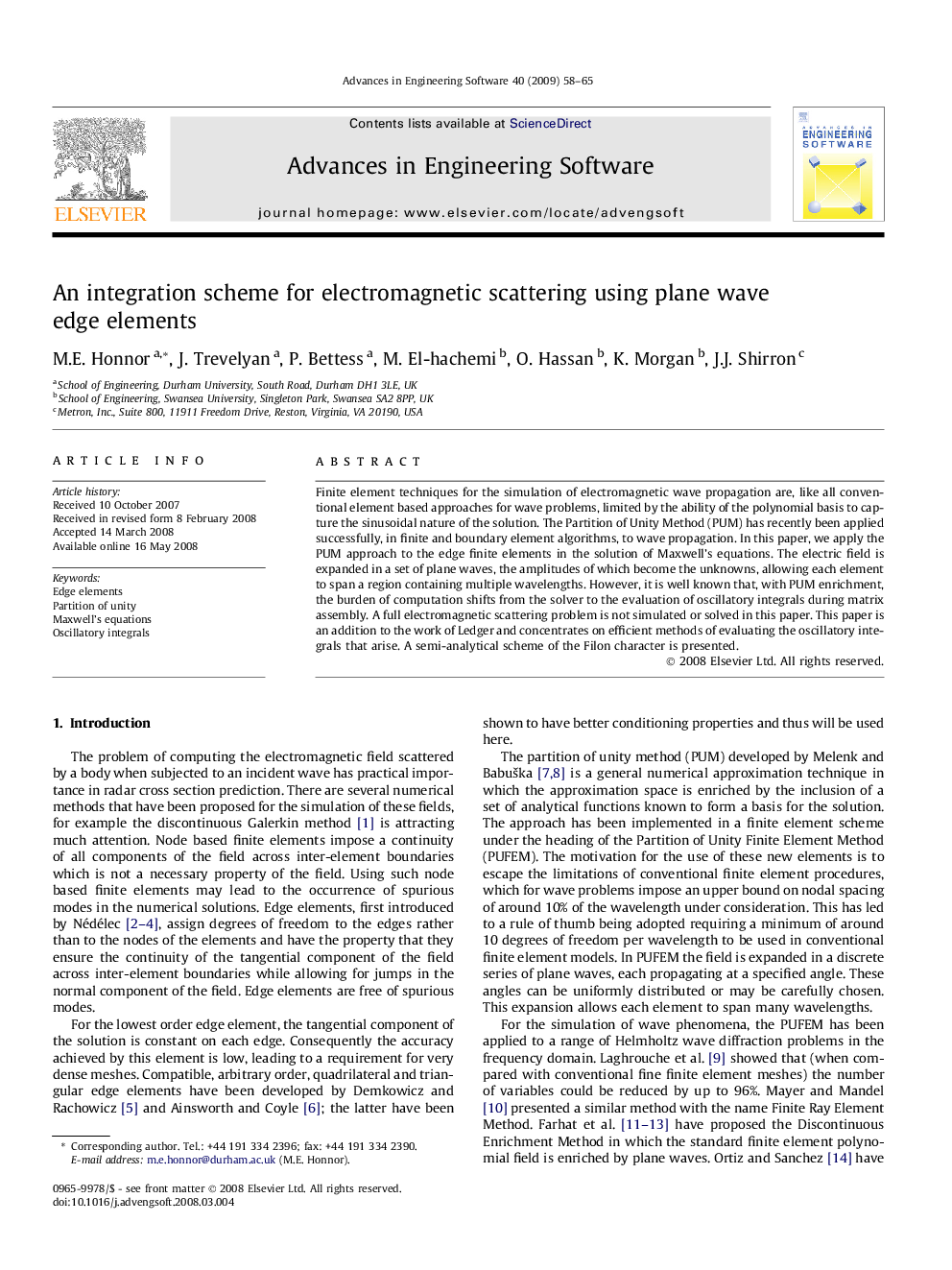| Article ID | Journal | Published Year | Pages | File Type |
|---|---|---|---|---|
| 568167 | Advances in Engineering Software | 2009 | 8 Pages |
Finite element techniques for the simulation of electromagnetic wave propagation are, like all conventional element based approaches for wave problems, limited by the ability of the polynomial basis to capture the sinusoidal nature of the solution. The Partition of Unity Method (PUM) has recently been applied successfully, in finite and boundary element algorithms, to wave propagation. In this paper, we apply the PUM approach to the edge finite elements in the solution of Maxwell’s equations. The electric field is expanded in a set of plane waves, the amplitudes of which become the unknowns, allowing each element to span a region containing multiple wavelengths. However, it is well known that, with PUM enrichment, the burden of computation shifts from the solver to the evaluation of oscillatory integrals during matrix assembly. A full electromagnetic scattering problem is not simulated or solved in this paper. This paper is an addition to the work of Ledger and concentrates on efficient methods of evaluating the oscillatory integrals that arise. A semi-analytical scheme of the Filon character is presented.
